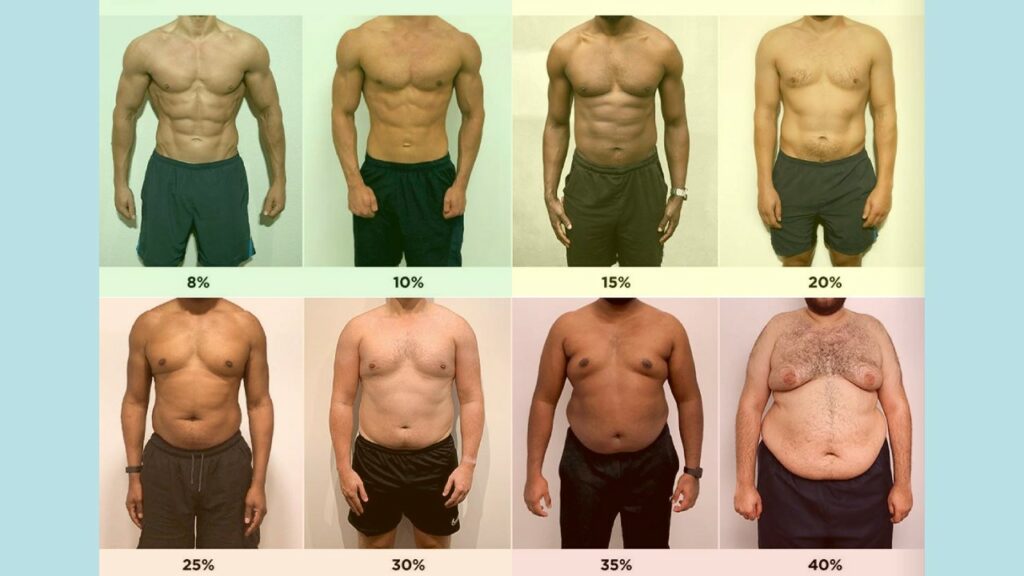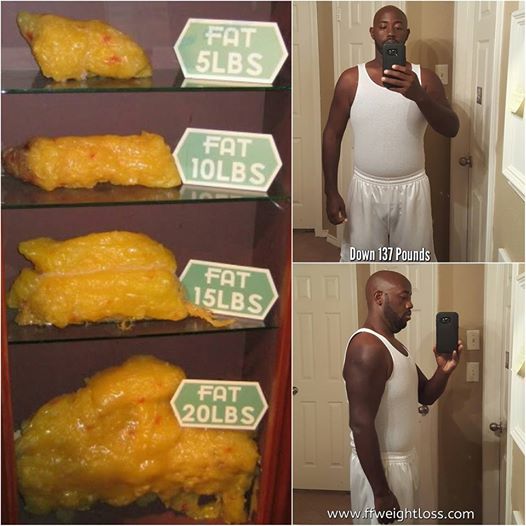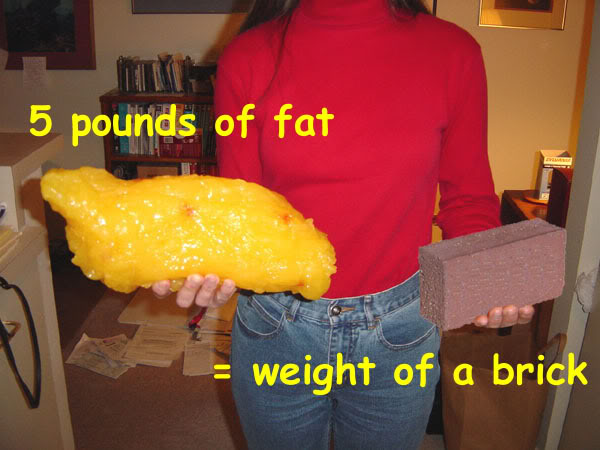What Does 60 Lbs Of Fat Look Like

The question plagues dieters and health enthusiasts alike: what does 60 pounds of fat actually look like? Understanding this visual representation can be a powerful motivator for weight loss and a stark reminder of the health implications of excess weight.
Visualizing the Unseen: 60 Pounds in Concrete Terms
While visualizing abstract numbers can be challenging, concrete comparisons help illustrate the sheer volume of 60 pounds of fat. It's more than just a number on a scale; it's a physical entity with tangible dimensions.
The Raw Material: What is Fat Made Of?
Adipose tissue, or body fat, is primarily composed of fat cells called adipocytes. These cells store triglycerides, a type of fat, and are surrounded by connective tissue, blood vessels, and nerves. Fat is less dense than muscle, meaning it occupies more space for the same weight.
Volume and Dimensions: How Much Space Does it Take Up?
Sixty pounds of fat occupies a significant volume. Studies and estimates suggest it's roughly equivalent to the size of a medium-sized dog or several large watermelons. This visual alone emphasizes the impact of excess fat on the body.
Imagine carrying around a 5-gallon water cooler jug – it weighs approximately 40 pounds. Now, add another half of that. That's the physical burden 60 pounds represents.
Beyond the Scale: The Impact on the Body
The visual impact goes beyond mere size. This amount of fat often distributes throughout the body, affecting various areas differently. It can accumulate around the abdomen, thighs, and internal organs, contributing to health risks.
Excess abdominal fat, also known as visceral fat, is particularly dangerous. It surrounds the internal organs and is linked to increased risks of heart disease, type 2 diabetes, and certain cancers.
Comparing to Everyday Objects
To further contextualize, consider everyday objects. 60 pounds is roughly equivalent to:
- Ten gallons of paint
- A large car tire
- Approximately 30 bricks
These comparisons provide a tangible understanding of the sheer quantity we're discussing.
Real-Life Visuals and Tools
While direct visual representation can be impactful, it's important to approach online images and models with caution. Many depictions are estimates and approximations, but can still provide a general idea.
Several resources offer visual aids: Online searches for "60 pounds of fat visual" will yield various images and models, but remember to view these critically. Always cross-reference information with reliable sources.
Some medical and fitness professionals use models or anatomical charts to illustrate the effects of excess fat. Consult with a healthcare provider for personalized guidance and accurate representations.
The Urgency of Addressing Excess Weight
Carrying 60 extra pounds of fat puts a strain on the body, increasing the risk of various health problems. These risks include cardiovascular disease, type 2 diabetes, joint pain, and certain types of cancer.
Weight loss, even a modest amount, can significantly reduce these risks and improve overall health. Focusing on a healthy diet, regular exercise, and adequate sleep are crucial steps.
Next Steps: Taking Control of Your Health
If you're concerned about excess weight, consult with a doctor or registered dietitian. They can assess your individual needs and recommend a personalized plan for weight loss and improved health. Don't delay seeking professional guidance.
Remember, even small changes can make a big difference over time. Start with realistic goals, focus on sustainable habits, and celebrate your progress along the way. Your health is worth the investment.
Ongoing research continues to explore the complexities of body fat and its impact on health. Stay informed and empowered to make informed decisions about your well-being.
















